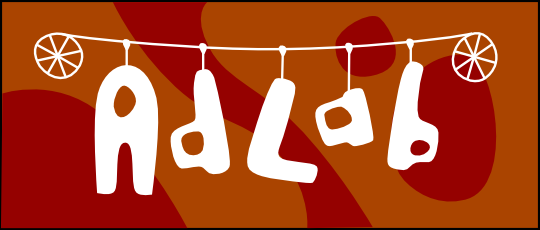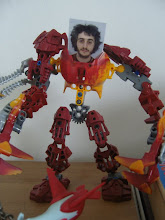I'm posting two stages at once because the photo upload tool on blogger was broken the other day. Anyway, here is the progress on the '10 minute robot'.
He now has a bracket mount for the tilt servo. I actually wasted 30 minutes trying to make this out of steel before realising that my lab's workshop hand-drill wasn't up to it. After giving up on that bit it only took 10 minutes to make this aluminium bracket out of scrap.
And here's a pan servo. Both degrees of freedom have been aligned with the sensor's center of rotation. Of course, mechanical offsets can be dealt with mathematically via trigonometry, but right now I wanted to solve this problem mechanically rather than in code.
















